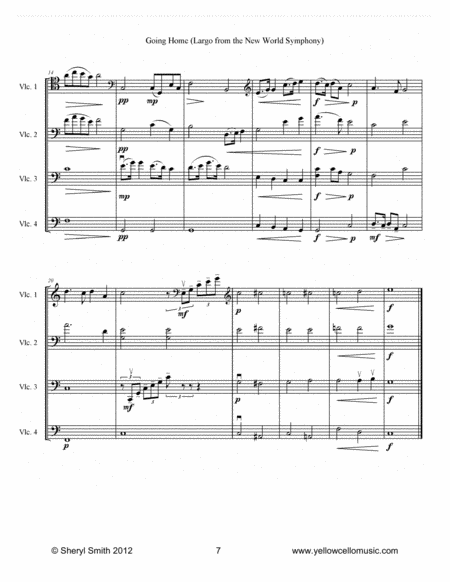

9 in E minor, “From the New World,” Op. Listen for syncopations and catchy dance rhythms.The Symphony No. A once-upon-a-time opening in the slow movement ushers in the beloved English horn solo we know as Going Home.
Neil Armstrong took a recording of the New World Symphony to the Moon during the Apollo 11 mission, the first Moon landing, in 1969. In older literature and recordings, this symphony was often numbered as Symphony No. It is by far his most popular symphony, and one of the most popular of all symphonies.
Work all done, care laid by, Going to fear no more. It's not far, just close by, Through an open door. Quiet-like, some still day, I'm just going home. The theme from the Largo was adapted into the spiritual-like song Goin Home, often.Here you go :) Lyrics: 'GOING HOME' (Antonin Dvorak) Going home, going home, I'm a going home.

One verified example is the song of the Scarlet Tanager in the Quartet. Statements that he borrowed melodies are often made but seldom supported by specifics. Which will be based upon Longfellow’s Hiawatha” (Dvořák never actually wrote such a piece). He also wrote that the third movement scherzo was “suggested by the scene at the feast in Hiawatha where the Indians dance.”In 1893, a newspaper interview quoted Dvořák as saying “I found that the music of the negroes and of the Indians was practically identical”, and that “the music of the two races bore a remarkable similarity to the music of Scotland.” Most historians agree that Dvořák is referring to the pentatonic scale, which is typical of each of these musical traditions.In a 2008 article in The Chronicle of Higher Education, prominent musicologist Joseph Horowitz asserts that African-American spirituals were a major influence on Dvořák’s music written in America, quoting him from an 1893 interview in the New York Herald as saying, “In the negro melodies of America I discover all that is needed for a great and noble school of music.” Dvořák did, it seems, borrow rhythms from the music of his native Bohemia, as notably in his Slavonic Dances, and the pentatonic scale in some of his music written in America from African-American and/or Native American sources. I have simply written original themes embodying the peculiarities of the Indian music, and, using these themes as subjects, have developed them with all the resources of modern rhythms, counterpoint, and orchestral colour.In the same article, Dvořák stated that he regarded the symphony’s second movement as a “sketch or study for a later work, either a cantata or opera. A day earlier, in an article published in the New York Herald on December 15, 1893, Dvořák further explained how Native American music had been an influence on this symphony:I have not actually used any of the melodies. They are the folk songs of America and your composers must turn to them.The symphony was commissioned by the New York Philharmonic, and premiered on December 16, 1893, at Carnegie Hall conducted by Anton Seidl.
Alexander Mackenzie conducted the London Philharmonic Society in the European premiere on June 21, 1894. Clapham says the symphony became “one of the most popular of all time” and at a time when the composer’s main works were being welcomed in no more than ten countries, this symphony reached the rest of the musical world and has become a “universal favorite.” It is performed more often “than any other symphony at the Royal Festival Hall, London” and is in “tremendous demand in Japan.”Several themes from the symphony have been used widely in films, TV shows, anime, video games, and advertisements. When the symphony was published, several European orchestras soon performed it. ReceptionAt the premiere in Carnegie Hall, the end of every movement was met with thunderous clapping and Dvořák felt obliged to stand up and bow. This was one of the greatest public triumphs of Dvořák’s career. In his fourth movement, Dvořák’s use of flashbacks to prior movements is reminiscent of Beethoven quoting prior movements as part of the opening Presto of the last movement. He wrote that he would not have composed his American pieces as he had, if he had not seen America. It has been said that Dvořák was inspired by the American “wide open spaces” such as prairies he may have seen on his trip to Iowa in the summer of 1893. Notices about several performances of the symphony include the phrase “wide open spaces” about what inspired the symphony and/or about the feelings it conveys to listeners.Dvořák was also influenced by the style and techniques used by earlier classical composers including Beethoven and Schubert. The falling fourths and timpani strokes in the New World Symphony ’s Scherzo movement evokes the Scherzo of Beethoven’s Choral Symphony.


 0 kommentar(er)
0 kommentar(er)
